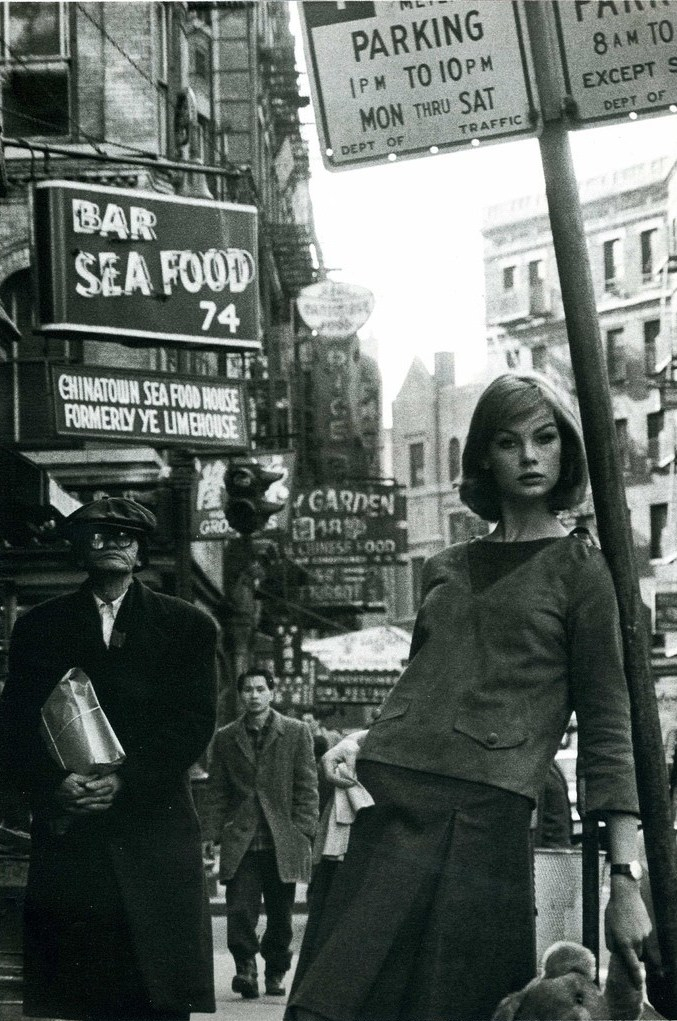Jane Birkin by Brian Duffy, 1965 via

Jane Birkin by Brian Duffy, 1965 via

Twiggy, Vogue October 1967, Cecil Beaton via

Veruschka, The Lion. Photo by Franco Rubartelli, 1967 via

Veruschka lying on the floor in a snakeskin-print catsuit embraces a cheetah. A photo from this shoot is published in the July issue of Vogue US, 1967. Photo by Franco Rubartelli via
An incredible hairdo. Photo by Franco Rubartelli, 1968 via
Smoke in your eyes. Photo by Franco Rubartelli, 1968 via
A combination of animal furs and prints. Photo by Franco Rubartelli, c. 1968 via

Embroidered maxi-coat trimmed with ostrich feathers. Photo by Franco Rubartelli, 1969 via

Dovima with Opera Glasses, Corday, William Helburn 1961

Opera Box with Dovima, Bob Taft, Tom Charles & Victor Cutrer, William Helburn, 1961 via
Jean Shrimpton’s (1942) was a fashion model and icon of Swinging London. Her career rose to prominence through her work with photographer David Bailey.
Of Jean Shrimpton, Bailey said:
She was magic and the camera loved her too. In a way she was the cheapest model in the world – you only needed to shoot half a roll of film and then you had it. She had the knack of having her hand in the right place, she knew where the light was, she was just a natural.
Shrimpton’s first photo session with Bailey was in 1960 (either for Condé Nast’s Brides on 7 December 1960 or for British Vogue). She started to become known in the modelling world around the time she was working with Bailey.
Shrimpton has stated she owed Bailey her career, and he is often credited for discovering her and being influential in her career.
In turn, she was Bailey’s muse, and his photographs of her helped him rise to prominence in his early career.

David Bailey, Jean Shrimpton, New York, 1962

David Bailey, Jean Shrimpton, New York, 1962 via

David Bailey, Jean Shrimpton, New York, 1962 via

David Bailey, Jean Shrimpton, New York, 1962 via

David Bailey, Jean Shrimpton, New York, 1962 via
Simone Micheline Bodin (1925-2015), known professionally as Bettina or Bettina Graziani, became one of the century’s first supermodels, rivalled in the forties only by the “English beauty” Barbara Goalen. Before becoming a model she was described as:
“…a freckle-faced rail worker’s daughter from Brittany”
She was renamed and recreated by Jacques Fath, who told her:
“We already have a Simone; you look to me like a Bettina”
Bettina was invited by Christian Dior to join his fashion house which she refused, choosing instead to work for Fath.

Jacques Fath in studio with Bettina Graziani, 1950 via

Bettina Graziani in Jacques Fath Dress, 1949 via
Marisa Berenson was born in New York City in 1947. Her maternal grandmother was the fashion designer Elsa Schiaparelli. Berenson had risen to prominence in the early 1960s and would later appear on the cover of the July 1970 issue of Vogue and in numerous fashion layouts for the magazine. Yves Saint Laurent once dubbed her “the girl of the Seventies”.
Eventually she was cast in several prominent film roles amongst others the Jewish department store heiress Natalia Landauer in the 1972 film Cabaret, for which she received some acclaim (including two Golden Globe nominations, a BAFTAnomination and an award from the National Board of Review).
American actress and model Marisa Berenson wearing a white organdy Valentino dress photographed by Vogue photographer Henry Clarke, in Cy Twombly’s Rome apartment in 1968 via
American actress and model Marisa Berenson wearing a white organdy Valentino dress photographed by Vogue photographer Henry Clarke, in Cy Twombly’s Rome apartment in 1968 via
American actress and model Marisa Berenson wearing a white organdy Valentino dress photographed by Vogue photographer Henry Clarke, in Cy Twombly’s Rome apartment in 1968 via
Twiggy is best remembered as one of the first international supermodels and a fashion icon of the 1960s. The Metropolitan Museum of Art’s 2009 catalogue of Style: Model as Muse Embodying Fashion stated that:
“Twiggy’s adolescent physique was the perfect frame for the androgynous styles that began to emerge in the 1960s. The trend was manifested in a number of templates: sweet A-line dresses with collars and neckties, suits and dresses that took their details from military uniforms, or, in the case of Yves Saint Laurent, an explicit transposition of the male tuxedo to women. Simultaneously, under the rubric of ‘unisex’, designs that were minimalistic, including Nehru suits and space-agey jumpsuits, were proposed by designers such as Pierre Cardin and Andre Courreges, and, most famously in the U.S.A., by Rudi Gernreich.”
Twiggy has been photographed by such noted photographers as Cecil Beaton, Richard Avedon, Melvin Sokolsky, Ronald Traeger, Bert Stern, Norman Parkinson, Annie Leibovitz and Steven Meisel.
Twiggy by Lewis Morley, bromide fibre print, 1965 via
Twiggy by Lewis Morley, bromide fibre print, 1965 via
Twiggy by Jim Gray, 1960 via